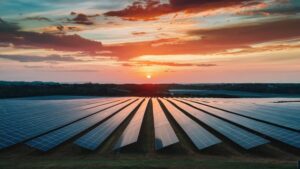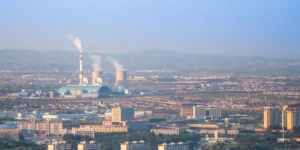Hydrogen-based fuels will mean shipping routes are redrawn — but which regions will benefit?

Hydrogen-based fuels are expected to play a key role in reducing maritime emissions—but the lower energy content by volume compared to current fuels could mean shipping routes are redrawn and new bunkering hubs established, speakers at a recent conference have said.
“Generally, today, the key bunkering points are known, like the Rotterdams and Singapores of this world,” said Loftur Thorarinsson, new energies lead at shipping firm Mitsui OSK Lines (MOL), on a panel at this week’s Reuters Hydrogen 2024 conference.
“When you switch it to methanol or ammonia, you will eat more fuel in terms of volume. So, our view is there will be an emergence of new points coming up,” he added, although he noted that crossing the Pacific is “maybe a little more difficult” with new, green fuels.
India in particular was cited by both Thorarinsson and fellow panellist Jong Chen Foo, global head of ammonia for chemicals giant OCI, as a prime spot for new bunkering. The country has already set a target for at least one green ammonia bunkering hub to be set up in 2025.
Foo added Latin America — “obviously not traditionally a bunkering point” — as another potential new bunkering spot, given it is already projected to be a major ammonia exporter.
However, while the Middle East is also expected to supply large volumes of both green and blue ammonia for export, Thorarinsson expressed doubts that this would mean significant redrawing of current shipping routes through the region.
Article continues below the advert
“In the Middle East, of course we already have Fujairah, we have existing points. I don’t expect Dubai to emerge as [a] new point, when the distances are very minimal.”
Which fuels will be in the mix?
Orders for methanol dual-fuel engines currently exceed those for ammonia-fuelled technology. This is in part because regulations for NH3 as a shipping fuel are still being developed and in part because costs currently favour methanol.
However, panellists throughout the conference broadly agreed that this will only be the case in the short term, as the supply of biogenic CO2 will be insufficient and prices will inevitably rise.
“There is a shortage,” said Roeland Baan, CEO of Danish technology firm Topsoe, on a separate panel. He noted that the company—which is one of the largest in the world for producing fuels from biomass—already sees CO2 feedstock as a bottleneck for the little production for road transport, “let alone if you go and decarbonise shipping, aviation”.
“Carbon — biogenic carbon — is going to be one of the most expensive commodities,” he added.
However, Thorarinsson and Foo were quick to point out that while ammonia would dominate the market in the long run, this would not mean no role for methanol or other lower-carbon fuels.
“The shipping industry uses all sorts of fuels today, and there is no singularity that we would only use one fuel,” said Thorarinsson, noting that ships today vary between using fuel oil, LPG and LNG.
He added that the specific route a ship opts for — in terms of distance and the cheapest fuels at bunkering spots on the way — could be a greater influence on which fuel it opts for, suggesting that vessels going from the Middle East to Japan may opt for LNG while ships going from Canada to Europe could go with methanol.
A variety of different fuels could also shore up energy or supply chain security.
“Even if you look at LNG security of a country or a region, the government will not go with just one or even two options, they go with multiple, and that’s how they can risk manage as well,” Foo said. “Same goes with green bunkering.”
But what about using pure hydrogen, rather than its derivatives?
“Generally speaking, for any sort of long distances, the answer is no — especially using direct hydrogen for ICEs [internal combustion engines], if you look at the economics of that, it just simply doesn’t make sense,” Thorarinsson said.
“In some unique cases where you have specific routes, there will be some room for fuel cells,” he added, but noted that these would likely have to compete with batteries.
Foo noted that the example of the hydrogen-powered Suiso Frontier vessel, which experienced a fire due to malfunctioning gas control equipment during its maiden voyage, has “dented confidence”.
“But in the future, who knows?” he added, suggesting that direct use of hydrogen as a fuel could make sense for regions with abundant H2 production.




